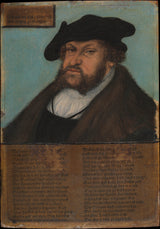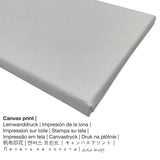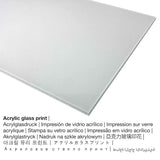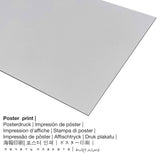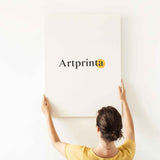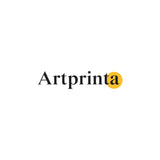Lucas Cranach the Elder and Workshop, 1532 - Johann I (1468–1532), the Constant, Elector of Saxony - fine art print
Tax included. Shipping calculated at checkout.
Which type of art product do we present?
The over 480 years old artpiece was made by Lucas Cranach the Elder and Workshop in the year 1532. The 480 years old artpiece has the size: 8 x 5 5/8 in (20,3 x 14,3 cm). Oil on beech, with letterpress-printed paper labels was applied by the German painter as the technique for the piece of art. The artwork is in the the art collection of The Metropolitan Museum of Art, which is located in New York City, New York, United States of America. With courtesy of: The Metropolitan Museum of Art, New York, Gift of Robert Lehman, 1946 (public domain). Creditline of the artwork: Gift of Robert Lehman, 1946. The alignment is in portrait format with an image ratio of 1 : 1.4, meaning that the length is 29% shorter than the width.
Choose your desired fine art print material option
The product dropdown menu gives you the opportunity to select your prefered size and material. The following options are available for individualization:
- Printed acrylic glass: The print on acrylic glass, often named a plexiglass print, will turn your favorite original artwork into beautiful décor. Your favorite work of art will be made with state-of-the-art UV printing technology. The major upside of a plexiglass fine art print is that contrasts plus smaller image details will be exposed due to the granular gradation.
- Poster print (canvas material): The poster is a printed canvas with a slightly roughened surface finish, which reminds the original masterpiece. Please note, that depending on the size of the canvas poster print we add a white margin of approximately 2 - 6cm round about the print in order to facilitate the framing.
- Metal (aluminium dibond print): These are metal prints on aluminium dibond material with a true depth effect, which makes a modern look thanks to a non-reflective surface. For our Print On Aluminum Dibond, we print the selected work of art onto the aluminium surface. The bright & white components of the work of art shine with a silky gloss but without any glare. Colors are luminous, the fine details of the print appear clear and crisp, and there’s a matte appearance you can literally feel. The print on aluminium is one of the most popular entry-level products and is an extremely stylish way to display art reproductions, as it puts 100% of the viewer’s focus on the artwork.
- Canvas print: A printed canvas stretched on a wood frame. A canvas generates the extra look of three-dimensionality. The advantage of canvas prints is that they are relatively low in weight, meaning that it is quite simple to hang your Canvas print without the support of extra wall-mounts. Canvas prints are suitable for all kinds of walls.
Disclaimer: We do our best to depict the art products with as many details as we can and to exhibit them visually. Please keep in mind that the tone of the print products, as well as the printing can vary somehwat from the presentation on the screen. Depending on your settings of your screen and the condition of the surface, colors can unfortunately not be printed one hundret percent realistically. In view of the fact that the art reproductions are processed and printed manually, there might as well be minor variations in the exact position and the size of the motif.
The product
| Print categorization: | art print |
| Method of reproduction: | digital reproduction |
| Manufaturing technique: | UV direct printing |
| Production: | produced in Germany |
| Stock type: | on demand production |
| Product usage: | home décor, art collection (reproductions) |
| Orientation: | portrait format |
| Aspect ratio: | 1 : 1.4 (length : width) |
| Interpretation of aspect ratio: | the length is 29% shorter than the width |
| Available reproduction fabrics: | acrylic glass print (with real glass coating), poster print (canvas paper), metal print (aluminium dibond), canvas print |
| Canvas on stretcher frame (canvas print) options: | 50x70cm - 20x28", 100x140cm - 39x55" |
| Acrylic glass print (with real glass coating) size options: | 50x70cm - 20x28", 100x140cm - 39x55" |
| Poster print (canvas paper) variants: | 50x70cm - 20x28" |
| Aluminium print size options: | 50x70cm - 20x28", 100x140cm - 39x55" |
| Art print framing: | without frame |
Structured artwork data
| Title of the artpiece: | "Johann I (1468–1532), the Constant, Elector of Saxony" |
| Classification: | painting |
| Art categorization: | classic art |
| Period: | 16th century |
| Created in the year: | 1532 |
| Artwork age: | 480 years old |
| Original medium: | oil on beech, with letterpress-printed paper labels |
| Original dimensions: | 8 x 5 5/8 in (20,3 x 14,3 cm) |
| Museum / location: | The Metropolitan Museum of Art |
| Museum location: | New York City, New York, United States of America |
| Available under: | The Metropolitan Museum of Art |
| Artwork license: | public domain |
| Courtesy of: | The Metropolitan Museum of Art, New York, Gift of Robert Lehman, 1946 |
| Artwork creditline: | Gift of Robert Lehman, 1946 |
Artist overview
| Name of the artist: | Lucas Cranach the Elder and Workshop |
| Gender of the artist: | male |
| Nationality of artist: | German |
| Professions: | painter |
| Country of the artist: | Germany |
| Artist classification: | old master |
| Lifetime: | 81 years |
| Born in the year: | 1472 |
| Died: | 1553 |
This text is intellectual property and protected by copyright ©, Artprinta.com
What does the website of the The Metropolitan Museum of Art say about this artwork from the painter Lucas Cranach the Elder and Workshop? (© - by The Metropolitan Museum of Art - www.metmuseum.org)
These posthumous portraits of the Saxon electors Friedrich III, the Wise, and Johann I, the Constant belong to a series of sixty such portrait pairs, ordered by Johann I’s son and successor, Johann Friedrich I, the Magnanimous, when he became elector in 1532. He intended the portraits of his father and uncle to serve as instruments of propaganda. The accompanying laudatory poems emphasize the passage of Saxon electoral preeminence from Friedrich to Johann, thereby implying the legitimacy of Johann Friedrich’s own electorate. Completed in 1533, the extensive series demonstrates the speed and efficiency of which the Cranach workshop was capable.

